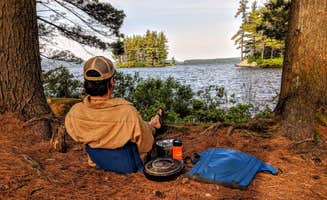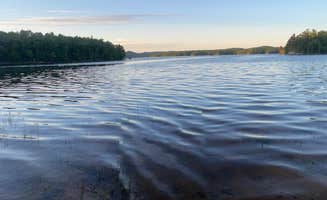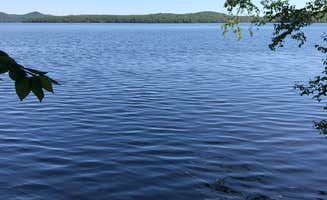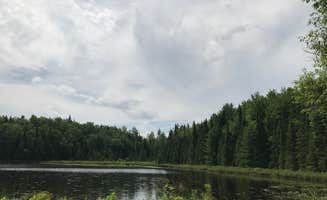Dispersed camping near Hermon, New York offers primitive wilderness experiences throughout the Adirondack region. Located within New York's North Country, the area features a mix of coniferous and deciduous forests with elevations ranging from 900 to 2,000 feet. Winter temperatures frequently drop below zero while summer highs typically reach the mid-70s with nighttime temperatures cooling significantly even during peak season.
What to do
Paddle remote islands: At Cranberry Lake Backcountry Sites, visitors can explore numerous paddling routes. "Beautiful campgrounds... clean.. friendly.. amazing lake for kayaking and boating. Sites not crowded together," notes Kristal Ann F. The lake provides easy access to multiple hiking trails accessible by water.
Hike nearby trails: Primitive campsites often connect to excellent hiking opportunities. The Stillwater Fire Tower trail stands out among local options, accessible from certain campsites. "This campsite is right down the road from the fire tower trail," reports Sam T. about his experience at Stillwater Reservoir.
Swimming in clear waters: Many sites offer excellent swimming opportunities during summer months. The Blue Lagoon primitive site features exceptional water quality according to Elizabeth B., who notes "The swimming is fantastic- water is clean and clear" at this undeveloped spot on Stillwater Reservoir.
What campers like
Waterfront access: Most dispersed sites in the region offer direct water access. "Public access boat ramp with limited parking available on both sides. No amenities on-site," explains Mona M. about her stay at Payne Lake Dispersed Site, where she enjoyed "Beautiful views, peaceful and quiet."
Complete digital disconnect: The remote nature of these sites means minimal connectivity. Sam T. experienced this at Stillwater Reservoir, noting you can "break away from technology because you get zero service out there." Similarly, Debbie T. confirms this at Polliwog Lake on Floodwood Road, reporting "Camped here for a few days, no cell, no internet."
Wildlife viewing: The undeveloped setting attracts diverse wildlife. Christie M. mentions spotting "Bald Eagles and Loons" during her family stay at Stillwater Reservoir. Many campers report excellent bird watching opportunities throughout spring and summer.
What you should know
Limited amenities: Most sites lack basic facilities. "Primitive site on the beautiful south eastern end of Stillwater. A short hike in to a great beach for swimming or paddling," explains Elizabeth B. about Blue Lagoon, where campers must bring all supplies.
Challenging access roads: Many sites require navigation of rough forest roads. Dane P. describes the journey to Stillwater Reservoir as "a 20 mile ride of just woods on a bumpy road. Pretty cool!" Similar conditions exist throughout the region, especially after rain.
Competition for spots: With the first-come, first-served system, popular weekends can be challenging. Elizabeth B. notes about Blue Lagoon that "because you can't make a reservation here sometimes there's competition for a spot."
Tips for camping with families
Bring water filtration: No potable water exists at these sites. For family camping, plan to filter lake water or bring sufficient supplies. The primitive nature means preparation is essential.
Consider island camping: For families seeking a unique experience, island sites provide special appeal. "We spent 3 nights backcountry camping on Catamount Island in Cranberry Lake and absolutely loved it!" shares one visitor, highlighting the adventure aspect for children.
Look for shaded sites: During summer, temperature management becomes important. Lo M. recommends Little Green Pond where there are "12 designated camping spots... Tree covered sites" that provide natural cooling during hot days. The pond also "has a small beach to swim" which appeals to families.
Tips from RVers
Limited RV-accessible options: Only certain dispersed sites accommodate recreational vehicles. Rebecca B. notes that along Horseshoe Lake, "Road is rough but easily doable if you take it slow," though she cautions "As it's a forest, the sites are pretty shaded, so solar and Starlink may present challenges."
Prepare for self-sufficiency: RVers must bring all supplies including drinking water. Kane experienced challenges at Stillwater Reservoir, explaining "I came here a couple days ago only to realize that all except one campsite needs a boat to be reached. It's first come first serve so best to find another place if you intend to drive up to your campsite."
Consider site dimensions: The primitive nature of these locations means limited space for larger vehicles. Most sites that accommodate RVs are designed for smaller units rather than large motorhomes or trailers.





